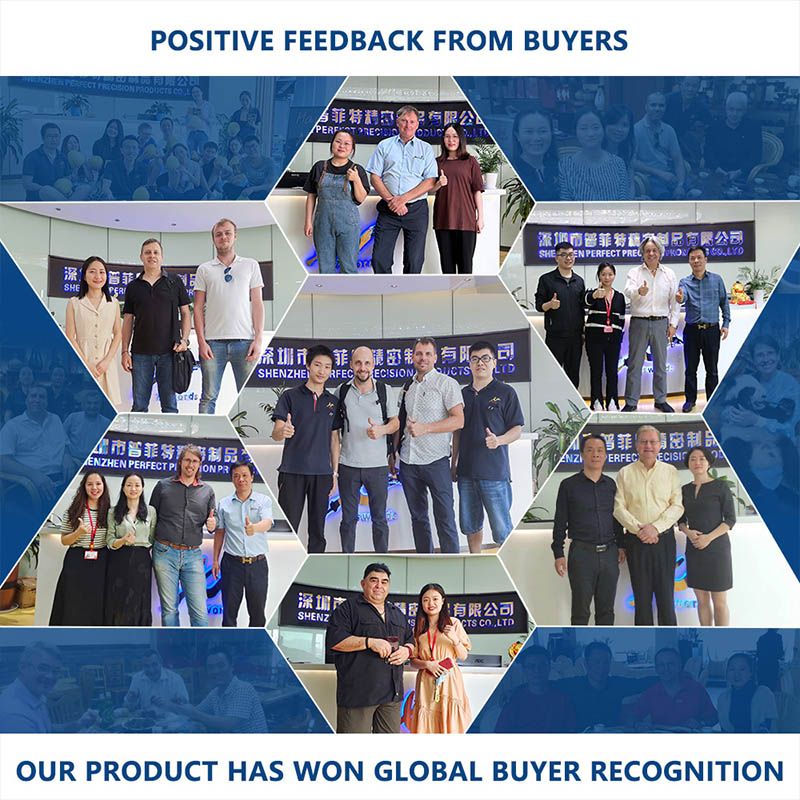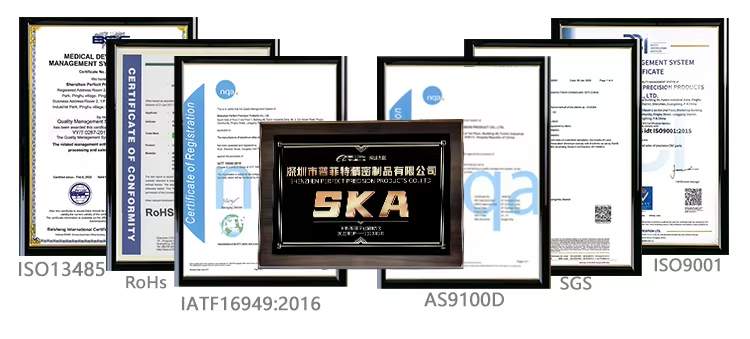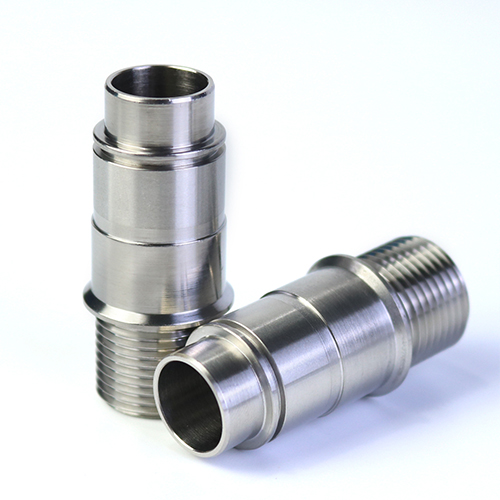Prototype Machining
In modern manufacturing, prototype machining is an indispensable technology that provides a critical validation and testing platform for product development by transforming computer-aided design (CAD) models into solid products. Prototype processing not only helps manufacturers evaluate the feasibility of designs before full-scale production, but also significantly shortens product development cycles, improves efficiency, and reduces costs. The following will discuss in detail the definition, technical principles, advantages, application areas, and future development trends of prototype processing.
Definition and Technical Principles of Prototype Processing
Prototype machining is a manufacturing method based on computer numerical control (CNC) technology, which guides CNC machine tools to perform cutting, drilling, milling and other operations on materials by reading CAD models and converting them into G-code, thereby generating solid prototypes that are highly consistent with the design. Unlike traditional "removal" processing, prototyping is a "subtractive" manufacturing technique that forms the desired shape by removing excess parts from the material. This technology is commonly referred to as "Rapid prototyping" (RPM), and its core lies in using computer-controlled machines to achieve high-precision and high-efficiency machining.
The process of prototype processing usually includes the following steps:
●Design and Modeling: Create 3D models using CAD software to ensure that the design meets functional and aesthetic requirements.
●CNC programming: Convert CAD models into G-code to generate machining instructions for CNC machines.
●Material preparation: Select suitable materials according to design requirements, such as metal, plastic, composite materials, etc.
●Processing and Inspection: CNC machine tools perform processing according to G-code, generate prototypes, and perform size, surface quality, and other inspections.
●Post processing: Grinding, polishing, coating and other treatments are carried out on the prototype to meet the appearance and performance requirements of the final product
Advantages of Prototype Processing
Prototype processing has many advantages in the manufacturing industry, making it an indispensable part of the product development process. Here are its main advantages:
1. High precision and consistency
CNC machining can achieve extremely high precision and tolerances, typically up to ± 0.025 millimeters, far exceeding the accuracy of traditional machining methods. In addition, since the machining process is controlled by a computer, it can ensure that the prototype of each machining is consistent in size, shape, and surface quality.
2. Rapid manufacturing and short cycles
Compared with additive manufacturing technologies such as 3D printing, prototype processing has significant advantages in manufacturing speed. CNC machine tools can complete the machining of complex parts in a few minutes, while 3D printing requires even longer time. In addition, the flexibility of prototype processing also enables rapid design adjustments and multiple iterations, thereby shortening the product development cycle.
3. Material diversity
Prototype processing supports the use of various materials, including metal, plastic, composite materials, etc., and can even use the same materials as the final product to ensure that the prototype is consistent in performance and appearance with the final product. The diversity of this material makes prototype processing have broad application prospects in multiple industries such as aerospace, medical, and automotive.
4. Cost effectiveness
Although the initial investment for prototype processing is relatively high, its cost-effectiveness is significant in small-scale production. Through prototype processing, manufacturers can identify and correct design defects before full-scale production, thereby avoiding significant losses caused by errors in mass production. In addition, the repeatability of prototype processing also makes it more efficient in large-scale production.
5. Functional verification and testing
Prototype processing can not only be used for verifying appearance and structure, but also for functional testing, such as testing the strength, durability, assembly performance, etc. of parts. This functional verification capability makes prototyping play a crucial role in product development.
Application areas of prototype processing
Prototype machining has a wide range of applications in multiple industries, especially in fields that require high precision and complex geometric shapes. Here are several main application areas:
1.automobile making
In the automotive industry, prototyping is used to manufacture engine components, interior parts, vehicle models, and more. Through prototyping, manufacturers can quickly test the feasibility of their designs and make necessary adjustments. In addition, prototype processing can also be used to manufacture molds for automotive parts, thereby improving production efficiency.
2.Aerospace
The aerospace industry has extremely high requirements for precision and reliability of parts, and prototype machining plays an important role in this field. Through prototyping, manufacturers can manufacture complex geometric shapes and high-precision parts, ensuring the safety and performance of aircraft and spacecraft.
3.Medical equipment
In medical equipment manufacturing, prototype processing is used to manufacture surgical instruments, implants, prosthetics, etc. These devices require extremely high precision and biocompatibility, and prototyping can meet these requirements. In addition, prototype processing can also be used to manufacture molds for medical equipment, thereby improving production efficiency and product quality.
4. Industrial manufacturing
Prototype processing is used in industrial manufacturing to manufacture various complex parts, such as mechanical transmission components, hydraulic system components, etc. Through prototyping, manufacturers can quickly test the feasibility of their designs and make necessary adjustments. In addition, prototype processing can also be used to manufacture molds for industrial equipment, thereby improving production efficiency and product quality.
5.Consumer electronics
In the field of consumer electronics, prototype processing is used to manufacture the outer shell and internal structure of products such as phone cases, headphones, and smartwatches. Through prototyping, manufacturers can quickly test the feasibility of their designs and make necessary adjustments. In addition, prototype processing can also be used to manufacture molds for consumer electronics products, thereby improving production efficiency and product quality


We are proud to hold several production certificates for our CNC machining services,which demonstrates our commitment to quality and customer satisfaction.
1、ISO13485:MEDICAL DEVICES QUALITYMANAGEMENT SYSTEM CERTIFICATE
2、ISO9001:QUALITY MANAGEMENT SYSTEMCERTIFICATE
3、IATF16949、AS9100、SGS、CE、CQC、RoHS
Great CNCmachining impressive laser engraving best Ive everseensofar Good quaity overall,and allthe pieces were packed carefully.
Excelente me slento contento me sorprendio la calidad deias plezas un gran trabajo This company does a really nice job on quality.
If there is an issue they are quick to fix itVery good communication and fast responise times
This company always does what I ask.
They even find any errors that we may have made.
We have been dealing with this company for a number of years and have always recelved exemplary service.
I am very pleased with the outstanding quality or mynew parts.The pnce is very competiive and the custo mer service is among the best Ive ever experienced.
Fast tumaround rabulous quality,and some of the best customer service anywhere on Earth.
Q:How fast can I receive a CNC prototype?
A:Lead times vary depending on part complexity, material availability, and finishing requirements, but generally:
Simple prototypes: 1–3 business days
Complex or multi-part projects: 5–10 business days
Expedited service is often available.
Q:What design files do I need to provide?
A:To get started, you should submit:
3D CAD files (preferably in STEP, IGES, or STL format)
2D drawings (PDF or DWG) if specific tolerances, threads, or surface finishes are required
Q:Can you handle tight tolerances?
A:Yes. CNC machining is ideal for achieving tight tolerances, typically within:
±0.005" (±0.127 mm) standard
Tighter tolerances available upon request (e.g., ±0.001" or better)
Q:Is CNC prototyping suitable for functional testing?
A:Yes. CNC prototypes are made from real engineering-grade materials, making them ideal for functional testing, fit checks, and mechanical evaluations.
Q:Do you offer low-volume production in addition to prototypes?
A:Yes. Many CNC services provide bridge production or low-volume manufacturing, ideal for quantities from 1 to several hundred units.
Q:Is my design confidential?
A:Yes. Reputable CNC prototype services always sign Non-Disclosure Agreements (NDAs) and treat your files and intellectual property with full confidentiality.













